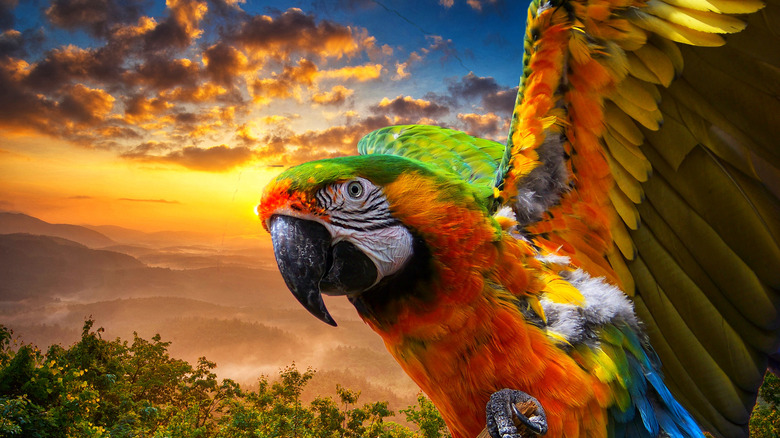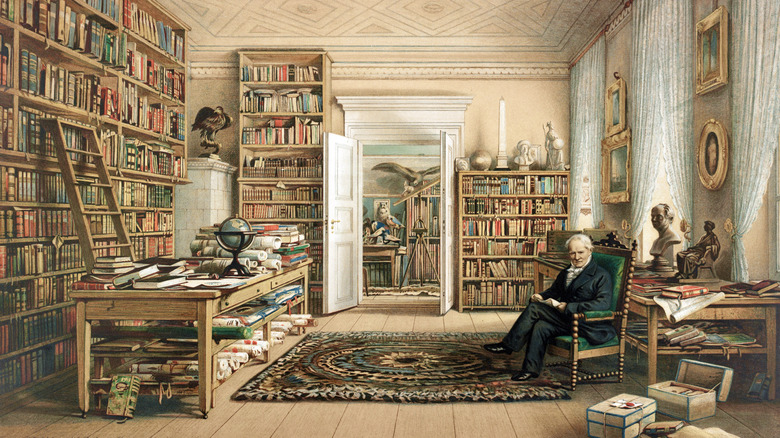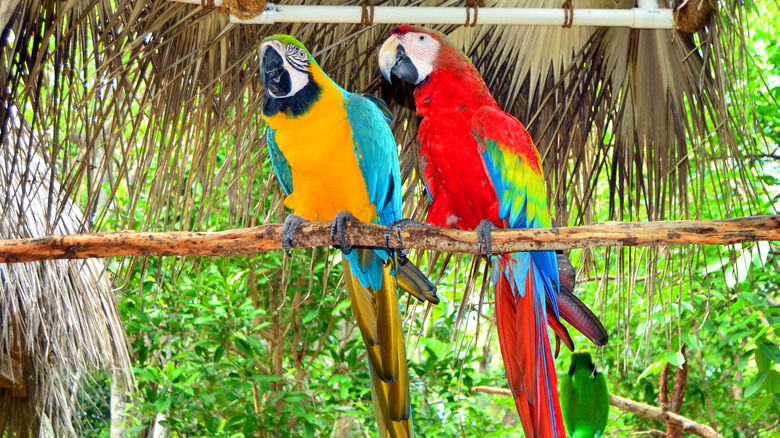How A Parrot Was The Last Remaining Speaker Of A Dead Language
Tales of ancient languages are rarely for the birds, but this one is. It's a story about a language so dead it was nearly buried, until it found an unexpected set of wings. The account of a parrot that saved a language from utter distinction is so peculiar experts initially wrote it off as a myth or legend. However, according to Mental Floss, a recovered journal belonging to explorer Alexander von Humboldt speaks of the legend as if it were true.
The 328-page research document entitled Equinoctial Regions of America V2 is a treasure chest of mysteries appearing in literary form. The lengthy text elaborates on tombs of extinct tribes, ancient artifacts such as the notorious mapires of the Guiana People, and, as you might have guessed, the talking parrot serving as a living recorder of a language that was otherwise dead.
Humboldt describes the scene vividly with the following quote: "At the period of our voyage an old parrot was shown at Maypures, of which the inhabitants said, and the fact is worthy of observation, that they did not understand what it said, because it spoke the language of the Atures."
Explorer Alexander von Humboldt claimed he met a parrot that spoke a dead language
According to Britannica, Alexander von Humboldt was a renowned naturalist with a penchant for adventures and several sectors of Earth sciences. His expeditions and discoveries not only changed the way we view the world, but also served to heighten international interest in science in general. While he is most known for his novel "Kosmos," Mental Floss reports that his finds, which include but are not limited to ecological data, zoological samples, maps, charts, and artifacts, gave unparalleled insight into worlds and cultures beyond.
By Humboldt's account, in the year 1800, during an expedition through the jungles of Venezuela, he met with a local Indigenous tribe called Carib who was rumored to be warring with the neighboring tribe Atures (via Gutenberg). The culmination of this war led to the latter tribe being forced into isolation and ultimately extinction. Most of their culture was sadly lost in the wreckage of war.
However, the Carib's possessed a captivating collection of caged parrots. All of the parrots spoke the language of the land ... except one. That one lone parrot rattled off words in the language of the dead tribe of Atures. In order to further preserve the linguistic history, Humboldt himself jotted down approximately 40 words of the speech and brought those phrases home as part of his enduring collection.
The 2,000-year-old language was a 2020 art exhibit featuring parrots
When we think of bringing something back from extinction, we often speak of creatures of yore. It's important to note though, that not everything that goes extinct is as tangible as a creature. There are many movements dedicated to reviving extinct aromas and breathing new life into dead languages.
Enter the contemporary artist and researcher Rachel Berwick who, according to the Independent, was so intrigued by this tale that she decided to teach the extinct vocabulary to two colorful parrots in the year 2000. Her interactive art piece, which graced the London's Serpentine Gallery, exhibited an orange-winged and blue-front parrot engaged in conversation, showing off linguistic skills rooted thousands of years in the past. The artist admits that their vocabulary is limited, a kind of skeleton of the linguistic soul of a lost tribe.
Language preservation is an important link to art, culture, and oral traditions. According to the UNESCO Atlas of the World's Languages in Danger, 230 languages went extinct in the seven decades between 1950 and 2010, and a third of all world languages are categorized as endangered. At least the Ature tribe might find some peace in the fact that their language was carried on the wings of feathered friends, still soaring some 2,000 years after the fact.


